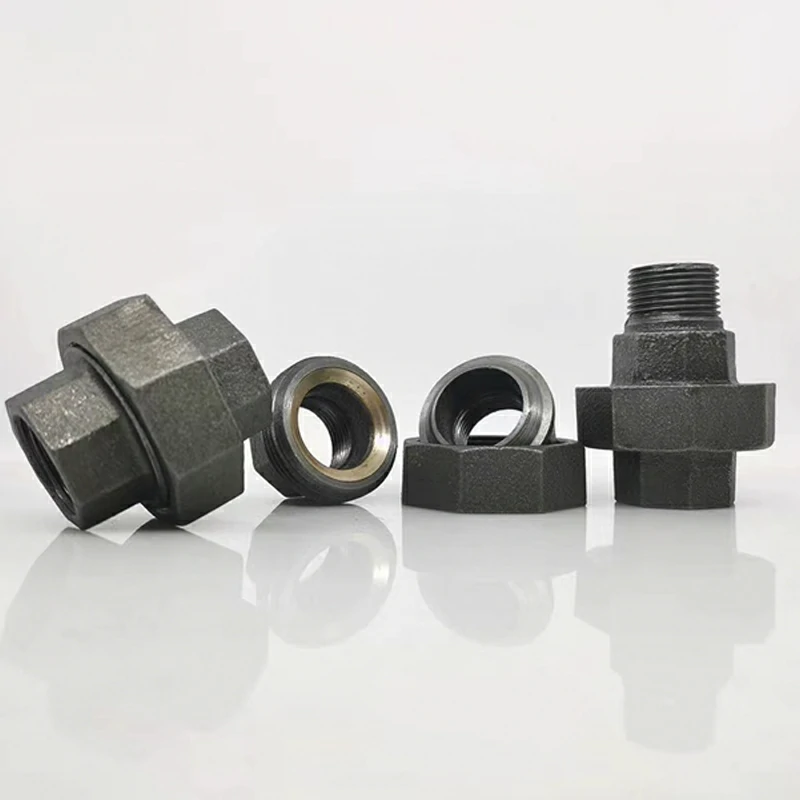The galvanized coating on a tee fitting or elbow provides protection against UV radiation and weathering primarily through its zinc composition and barrier effect.
Here’s how it works:
- Zinc Composition: Galvanization involves coating the surface of the steel fitting with a layer of zinc. Zinc is highly resistant to corrosion and oxidation, making it effective at protecting the underlying steel from weathering effects, including UV radiation.
- Barrier Effect: The zinc coating forms a barrier between the steel surface of the fitting and the surrounding environment. This barrier shields the steel from exposure to UV radiation, moisture, oxygen, and other environmental factors that can lead to corrosion and degradation over time.
- Passivation: Zinc has the ability to form a protective layer of zinc oxide and zinc hydroxide on its surface when exposed to air and moisture. This passivation process further enhances the protective properties of the galvanized coating by creating an additional barrier against UV radiation and weathering.
- Self-healing Properties: In the event that the galvanized coating becomes scratched or damaged, galvanized tee fitting the zinc in the surrounding area can act sacrificially to protect the exposed steel from corrosion. galvanized tee fitting This self-healing mechanism helps maintain the integrity of the coating and prolongs the life of the fitting.
- Thick Coating: Galvanized coatings are typically applied with a relatively thick layer of zinc, providing robust protection against UV radiation and weathering. The thickness of the coating can vary depending on the application and the desired level of protection.
Overall, the galvanized coating on a tee fitting or elbow serves as an effective barrier against UV radiation and weathering, helping to extend the lifespan of the fitting and maintain its structural integrity in outdoor or corrosive environments. However, it’s essential to note that prolonged exposure to extreme UV radiation or harsh environmental conditions can still cause gradual degradation of the galvanized coating over time. Regular inspection and maintenance are recommended to ensure the continued effectiveness of the coating in protecting the fitting.
How does the malleable iron pipe fittings design of the elbow contribute to efficient fluid flow?
The design of malleable iron pipe fittings, including elbows, plays a significant role in facilitating efficient fluid flow within piping systems. Here’s how the design characteristics contribute to this efficiency:
- Smooth Interior Surface: Malleable iron pipe fittings, including elbows, are typically manufactured with smooth interior surfaces. These smooth surfaces minimize frictional resistance as fluids flow through the fittings, reducing pressure drop and energy loss along the piping system. This contributes to more efficient fluid flow and helps optimize the performance of the system.
- Uniform Cross-Sectional Area: Elbows are designed with a uniform cross-sectional area throughout the bend, maintaining consistent flow characteristics along the length of the fitting. This uniformity helps prevent turbulence and flow disturbances that can lead to pressure fluctuations and inefficiencies in fluid conveyance.
- Gradual Bend Radius: The design of malleable iron elbows often incorporates a gradual bend radius, which promotes smoother fluid flow transitions as the fluid changes direction within the fitting. This gradual curvature helps minimize flow disturbances and pressure losses associated with abrupt changes in flow direction, ensuring efficient fluid conveyance through the elbow.
- Optimized Flow Path: Malleable iron elbows are engineered to provide an optimized flow path that minimizes resistance to fluid flow. By carefully shaping the interior geometry of the fitting, china malleable iron pipe fittings factory designers can ensure that fluid flow is directed smoothly through the elbow, reducing the risk of eddies, vortices, or dead zones that can impede flow efficiency.
- Proper Sizing and Configuration: Malleable iron elbows are available in a variety of sizes, angles, and configurations to suit the specific requirements of different piping systems. Proper selection and installation of elbows that match the flow rate, pressure, and fluid characteristics of the system help ensure optimal fluid flow performance and efficiency.
- Leak-Free Joints: Malleable iron pipe fittings are designed to create tight, leak-free joints when properly installed. By minimizing the potential for leaks or fluid losses at connection points, these fittings help maintain system integrity and prevent disruptions to fluid flow, contributing to overall efficiency and reliability.
Overall, the design of malleable iron pipe fittings, including elbows, is carefully engineered to promote efficient fluid flow by minimizing frictional losses, turbulence, and pressure drop within piping systems. By selecting and installing fittings that are well-suited to the specific requirements of the system, engineers can optimize fluid flow performance and maximize the efficiency of fluid conveyance processes.
